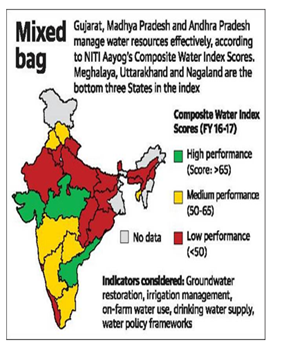

Context
The United Nations (UN) 2023 Water Conference will take place in New York from March 22-24, 2023.
About the Conference:
- This will be the second UN Conference dedicated to water after the one held in Mar del Plata, Argentina, in 1977.
- This year is celebrated as the 46th anniversary of the Mar del Plata conference.
- Need of the initiative:
- The world’s population has doubled to eight billion since the last UN Water Conference in 1977; consequently, the demand for water has soared. Access to clean water and sanitation remains a significant challenge in many parts of the world.
- Today, over 2.2 billion people lack access to safe drinking water and 4.2 billion lack access to basic sanitation facilities and hygiene.
Mar del Plata Conference:
- The first-ever global water conference resulted in the Mar del Plata Action Plan.
- It outlined several recommendations for improving water management and access, including developing integrated water resources management frameworks, increased investments in water infrastructure and recognising water as a fundamental human right.
- The conference highlighted water resource interdependence and called for more coordinated water management.
Global Conventions to conserve Water:
|
Under the Dublin Principles, a policy agenda was dictated, and water was established as an “economic good”. |
- Sustainable Development Goals (SDGs) include a specific goal on water and sanitation (Goal 6), and the UN-mandated Paris Agreement recognises the interlinkages between water and climate change.
- The International Drinking Water Supply and Sanitation Decade from 1981 to 1990, the 1992 UN Conference on Environment and Development in Rio de Janeiro (Agenda 21, Chapter 18) and International Conference on Water and the Environment in Dublin elevated water’s importance.
|
Terms related to water:
|
Causes for water scarcity:
- Inefficient use of water for agriculture. India is among the top growers of agricultural produce in the world and therefore the consumption of water for irrigation is amongst the highest (80 % of the water).
- Traditional techniques of irrigation causes maximum water loss due to evaporation, drainage, percolation, water conveyance, and excess use of groundwater
- Policies like several states giving free electricity to farmers or giving financial support for groundwater extraction -- borewells and tube wells -- results in uncontrolled exploitation and wastage of resource.
- Reduction in traditional water recharging areas. Rapid construction is ignoring traditional water bodies that have also acted as ground water recharging mechanism.
- Water is not valued in India. It is very cheap commodity in India. People think that if they own the land, they own the water.
- India as a country extracts the highest amount of groundwater in the world.
- Improper Waste water treatment: Sewage and wastewater drainage into traditional water bodies.
- Lack of on-time de-silting operations in large water bodies that can enhance water storage capacity during monsoon.
- Lack of efficient water management and distribution of water between urban consumers, the agriculture sector and industry.
- Non-existent pricing of water. State governments have control over water-related policies, and the lack of legislation for groundwater extraction and the inability to price water for every home due to political constraints has led to a paralysis in the formation of a sustainable framework.
Impacts:
- Burden on Women to fetch water and seen as a responsibility to bring water from far places in India.
- Lack of sanitation and water requirement in the body.
- Changes animal profile and rearing pattern of a region
- Affects plants and Agriculture
- Eating habits gets affected which can led to increased risk of Kidney and liver related ailments.
|
Related Government Initiatives:
|
Way forward:
- Feminisation of Water Crisis: Addressing women’s water, sanitation and hygiene requirements is a critical driver in attaining gender equity and unlocking the potential of half of the world’s population. The water crisis is a women’s issue and feminists need to talk about it.
- Save Fresh water sources: The water levels of the floodplain aquifers need to be monitored scrupulously to be well above the river water level to avoid contamination by river water.
- Less water Intensive vegetation and Agriculture: Floodplains can be secured by planting organic food forests or fruit forests which don’t demand or consume much water.
- Corporate involvement: In water management, corporations must play a more active role in using their Corporate Social Responsibility (CSR) efforts towards innovation and conservation of water and harness water recharge.
Conclusion:
Freshwater is a finite and limited resource on Earth and, increasingly, much of it is polluted, by both pathogenic microbes and chemical contaminants. Human demand for freshwater is increasing; in particular, water is required to irrigate crops to feed the rapidly expanding human population. Hence there is an urgent need for such global initiative to spread awareness and tackle the water scarcity menace.


